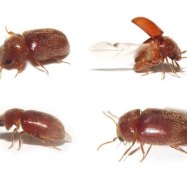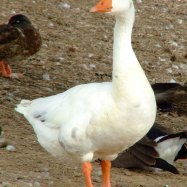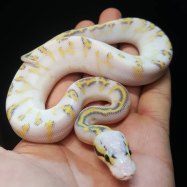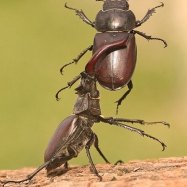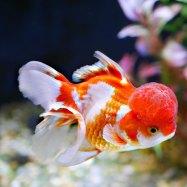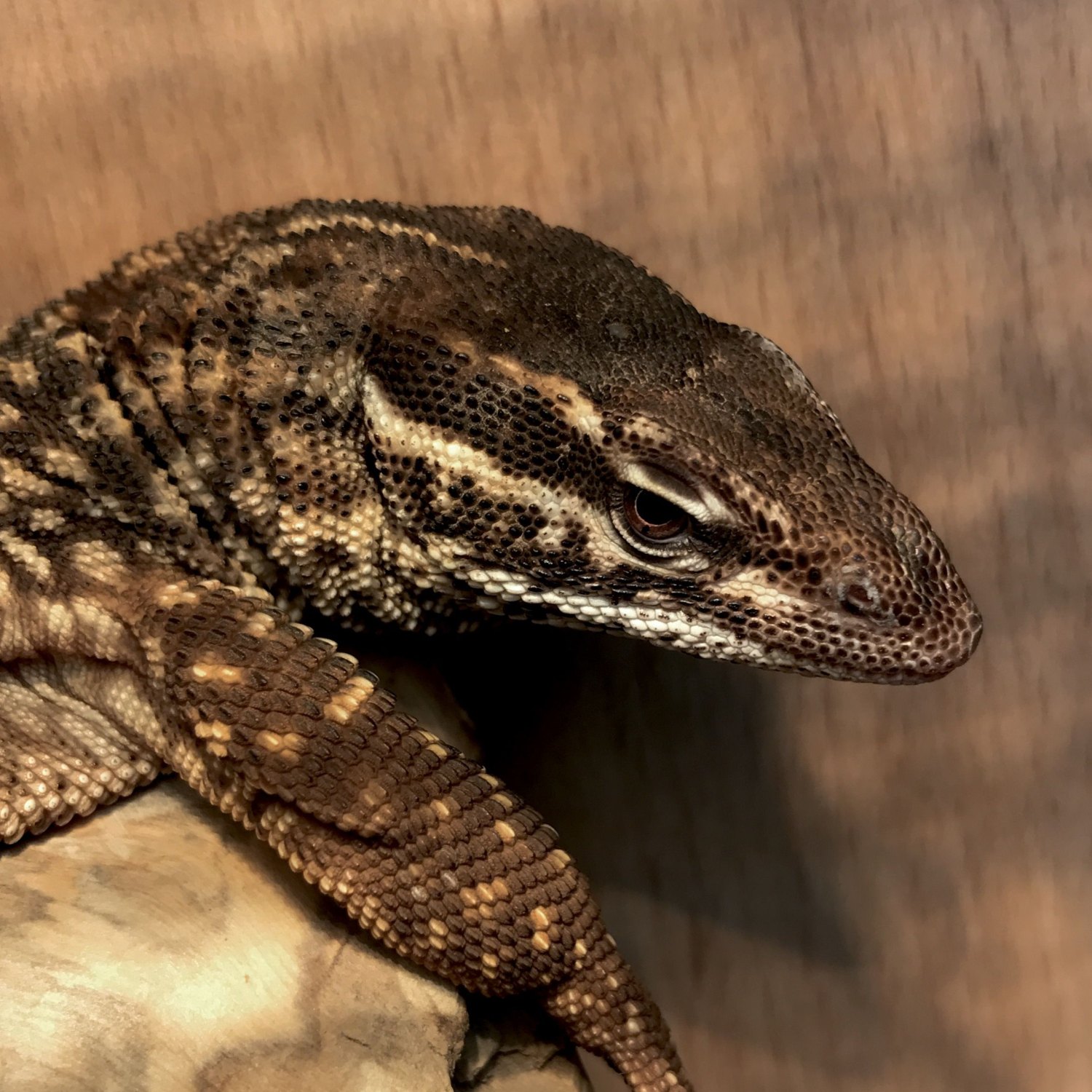
Ackie Monitor
60-70 cm (24-28 in)
The Ackie Monitor, native to Northern Australia, is a medium-sized lizard with short legs. Known for its vibrant colors and friendly demeanor, these reptiles make great pets. With a length of 60-70 cm, they're easy to care for and can live up to 15 years. Don't be fooled by their small size, they have a big personality! #AckieMonitor #NorthernAustralia #Varanidae
Animal Details Summary:
Common Name: Ackie Monitor
Kingdom: Animalia
Habitat: Savannahs, grasslands, and rocky areas
The Hidden Gem of the Reptile World: The Ackie Monitor
The world is full of fascinating creatures, both big and small. These creatures inhabit diverse habitats, from the depths of the oceans to the tops of the mountains. In the midst of this vast array of animals, there is one creature that often goes unnoticed – the Ackie Monitor. With its vibrant coloration and unique body shape, this reptile is truly a hidden gem of the animal kingdom Ackie Monitor.The Ackie Monitor, scientifically known as Varanus acanthurus, is also commonly referred to as the spiny-tailed monitor or ridge-tailed monitor. It belongs to the kingdom Animalia, the phylum Chordata, the class Reptilia, and the order Squamata. This species is a member of the Varanidae family, which includes other well-known monitors such as the Komodo dragon.
Native to northern Australia and southern New Guinea, the Ackie Monitor can be found in a variety of habitats, including savannahs, grasslands, and rocky areas. However, their primary geographic distribution is in the Northern Territory of Australia. This is where they are most commonly found in the wild.
With their carnivorous feeding method, these lizards may not be the friendliest of creatures, but their unique features make them one of the most interesting animals to observe. Let's take a closer look at what makes the Ackie Monitor a truly special species.
A Fiery Coloration
As mentioned earlier, the Ackie Monitor boasts of striking coloration Amazonian Royal Flycatcher. The upper body of this reptile is typically a vibrant shade of red or yellow-brown, with black markings adorning its entire body. These striking colors are believed to serve as a defensive mechanism to ward off predators.Its bright coloration, coupled with its relatively short and stout body, makes the Ackie Monitor stand out in its natural surroundings. This feature is especially evident when the reptile is on the move, as it moves with a unique gait, utilizing its strong legs with a noticeable bobbing motion.
A Unique Body Shape
The Ackie Monitor is considered a medium-sized monitor, with an average length of 60-70 cm (24-28 in). While this may not seem very large in comparison to other lizards, this species has a unique body shape that sets it apart from its Monitor family members.Unlike other monitors, the Ackie Monitor has a stocky and compact body. Its relatively shorter, stouter legs and its pronounced snout give it a distinct appearance. This body shape allows the reptile to move quickly and effortlessly through its rocky habitat, which is especially beneficial during hunting.
Finely Tuned Hunter
Speaking of hunting, the Ackie Monitor is an efficient and skilled predator. Its strong jaw and sharp teeth allow it to consume a variety of foods, including insects, small mammals, birds, and even other reptiles. This versatile diet contributes to its ability to thrive in different habitats, making it a true survivor in the wild.The Ackie Monitor is an opportunistic hunter, meaning that it takes advantage of whatever prey is available in its environment. However, its eyesight and sense of smell are finely tuned, allowing it to efficiently track and hunt down its prey. These traits, along with its quick agility, make the Ackie Monitor a formidable predator.
A Surprising Secret
For many years, the Ackie Monitor was believed to be solely an egg-laying species. However, recent observations in the wild have revealed that this reptile is actually capable of giving birth to live young – a process known as ovoviviparity.This process involves the female producing and keeping the eggs inside her body until they are ready to hatch. This unique trait is thought to aid in the survival of the species, as it allows the mother to provide some level of protection for her offspring until they are ready to fend for themselves.
A Unique Pet
Due to its unique appearance and behavior, the Ackie Monitor has become a popular pet among reptile enthusiasts. However, owning one of these lizards requires a deep understanding of proper husbandry and a significant amount of time and effort.In the wild, the Ackie Monitor has a lifespan of 10-15 years. In captivity, with proper care, they can live even longer. However, this species is not recommended for beginners as they require specialized care, including specific temperatures, humidity levels, and a varied diet.
Their enclosure should be large enough to allow for adequate exercise and include a variety of hiding spots, as these lizards are known to be shy and often retreat to secluded areas. It is also important to note that Ackie Monitors can be prone to obesity, so a well-balanced and nutritious diet is crucial.
In Conclusion,
The Ackie Monitor may not be as well-known as some of its larger and more popular Monitor family members, but it certainly deserves recognition for its unique features and adaptability. With its fiery coloration, distinctive body shape, agile hunting skills, and surprising reproduction method, the Ackie Monitor is truly a hidden gem of the reptile world.Whether you're a reptile enthusiast or simply someone looking to learn more about the amazing creatures that inhabit our planet, the Ackie Monitor is a species worth knowing and appreciating. So, the next time you happen to come across one of these lizards in the wild or in captivity, take a moment to observe its distinct features and marvel at the wonders of the animal world.

Ackie Monitor
Animal Details Ackie Monitor - Scientific Name: Varanus acanthurus
- Category: Animals A
- Scientific Name: Varanus acanthurus
- Common Name: Ackie Monitor
- Kingdom: Animalia
- Phylum: Chordata
- Class: Reptilia
- Order: Squamata
- Family: Varanidae
- Habitat: Savannahs, grasslands, and rocky areas
- Feeding Method: Carnivorous
- Geographical Distribution: Northern Australia and southern New Guinea
- Country of Origin: Australia
- Location: Northern Australia
- Animal Coloration: Red or yellow-brown with black markings
- Body Shape: Medium-sized with relatively short legs
- Length: 60-70 cm (24-28 in)
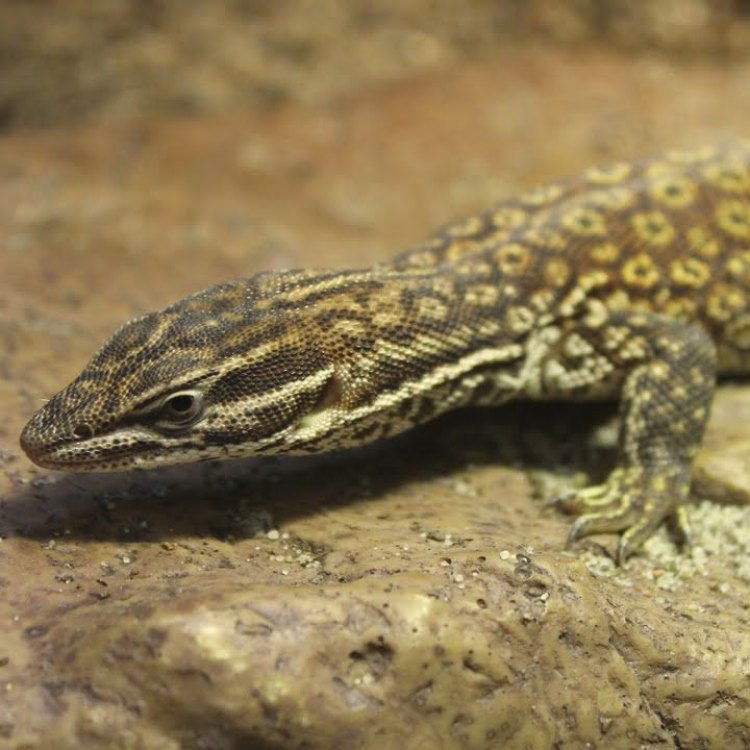
Ackie Monitor
- Adult Size: 60-70 cm (24-28 in)
- Average Lifespan: 10-15 years
- Reproduction: Oviparous
- Reproductive Behavior: Mating occurs between September and November
- Sound or Call: Ackie monitors do not produce vocal sounds
- Migration Pattern: Non-migratory
- Social Groups: Solitary or small groups
- Behavior: Diurnal and active
- Threats: Habitat destruction and illegal pet trade
- Conservation Status: Least Concern
- Impact on Ecosystem: They help control populations of small mammals and insects
- Human Use: Captivity as pets
- Distinctive Features: Short and stocky tail, triangular head, and sharp teeth
- Interesting Facts: Ackie monitors are known for their intelligence and curious nature
- Predator: Large birds of prey, snakes, and other monitor lizards
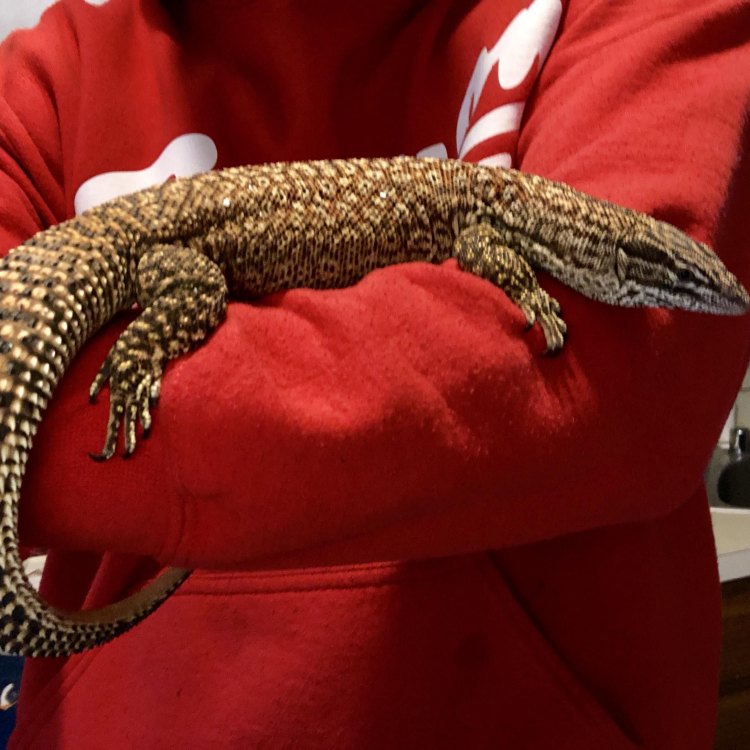
Varanus acanthurus
The Fascinating World of Ackie Monitors
Have you ever heard of Ackie monitors? These exotic creatures are a lesser-known species of monitor lizard that have been gaining popularity as pets in recent years. Native to arid regions of Australia, Ackie monitors, also known as spiny-tailed monitors, are fascinating creatures with unique characteristics and behaviors. In this article, we will explore the world of Ackie monitors and uncover what makes them such interesting animals.Ackie Monitors - The Basics
Acknowledged as one of the smaller monitor lizard species, Ackie monitors reach a maximum adult size of 60-70 cm (24-28 in) in length PeaceOfAnimals.Com. They have a life span of 10-15 years, making them a long-term commitment for any potential owner. These lizards are oviparous, meaning they lay eggs, and usually reproduce in the spring and summer months. However, their reproductive behavior is particularly interesting as mating occurs between September and November, making it an unusual occurrence among reptiles.One of the distinctive characteristics of Ackie monitors is their unique sound or call - the absence of it. Unlike many other lizard species, Ackie monitors do not produce any vocal sounds. This may be due to their short and stocky tail, which makes it difficult for them to produce vocalizations. Instead, they rely on body language, such as head bobbing, to communicate with each other.
Social Behavior - Solitary or Small Groups
In the wild, Ackie monitors are typically solitary creatures, but can also be found living in small groups, usually consisting of an adult male, several females, and their offspring. These groups are not permanent and can change over time, depending on food availability and other factors Asian Palm Civet. This social behavior is also observed in captive Ackie monitors, making them suitable pets for those looking for a companion reptile.Active and Diurnal Creatures
Ackie monitors are diurnal creatures, meaning they are active during the day and sleep at night. In their natural habitat, they can be seen basking in the sun, hunting for food, or digging burrows. As pets, they need adequate space and a warm environment to thrive. A spacious enclosure with proper lighting and heating is essential for providing a comfortable and stimulating environment for these curious creatures.The Dark Side of Ackie Monitor Conservation
While Ackie monitors are not currently listed as an endangered species, they do face various threats in the wild. Habitat destruction due to human activities, such as mining and agriculture, is a significant threat to their survival. Additionally, Ackie monitors are also victims of the illegal pet trade, where they are captured and sold for exotic pet enthusiasts.Impact on Ecosystems and Human Use
As with any species, Ackie monitors have an impact on their ecosystem. These reptiles are essential for maintaining a balance in their natural habitat by controlling the populations of small mammals and insects. Moreover, they also play a vital role in seed dispersal, contributing to the growth and survival of certain plants.In captivity, Ackie monitors are popular pets among reptile enthusiasts due to their unique characteristics and behaviors. However, it is essential to obtain them from certified breeders and not from the wild, as this contributes to the illegal pet trade and further threatens their existence in the wild.
Awe-inspiring Features of Ackie Monitors
Ackie monitors have several distinctive features that make them stand out from other lizard species. Their short and stocky tail is one of them, which they use to store fat when food is scarce. This feature also makes them agile climbers, allowing them to maneuver through rocky terrain and escape predators.Another unique trait of Ackie monitors is their triangular head, which gives them a fierce appearance. This, combined with their sharp teeth, makes them formidable predators in their natural habitat. As pets, their sharp teeth require proper handling and training to prevent any accidental bites or injuries.
Did You Know?
Ackie monitors are renowned for their intelligence and curious nature. They are known to recognize their owners, interact with them, and even learn new behaviors. These cognitive abilities make them fascinating creatures to observe and care for, providing a rewarding experience for their owners.Predators of Ackie Monitors
In the wild, Ackie monitors have several natural predators, including large birds of prey, snakes, and other monitor lizards. However, their small size and agility make them skilled at evading these threats. As pets, proper enclosure and supervision are necessary to prevent any potential harm from other pets or household hazards.Final Thoughts
Ackie monitors may not be as famous as their larger and more well-known cousins, but they are undoubtedly one of the most interesting and unique lizard species out there. These intelligent and curious creatures make wonderful pets for those willing to provide them with the proper care and environment they need. However, it is vital to remember that they are also an essential part of their ecosystem, and efforts must be made to conserve their wild populations. Adopting a captive-bred Ackie monitor and supporting conservation efforts are great ways to help preserve this fascinating species for generations to come.
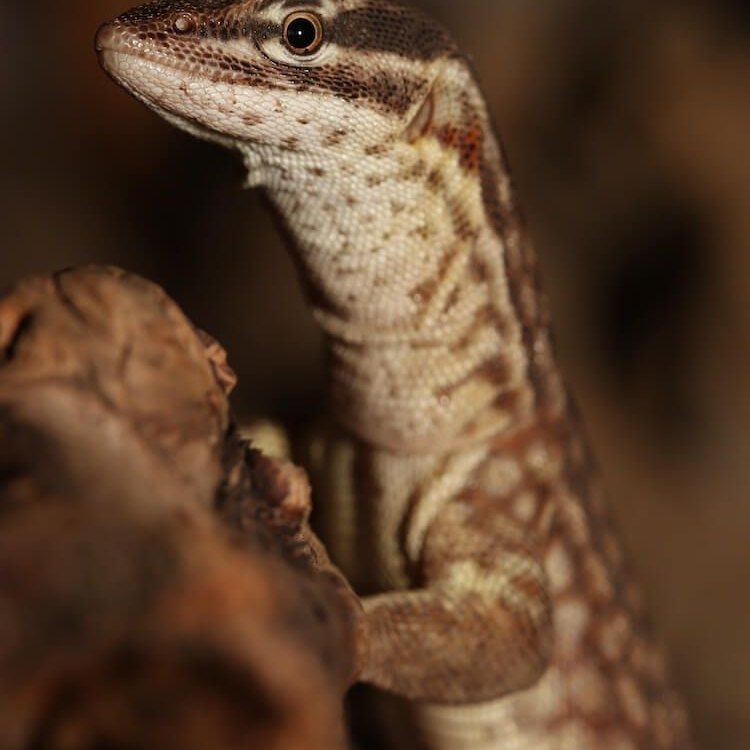
The Hidden Gem of the Reptile World: The Ackie Monitor
Disclaimer: The content provided is for informational purposes only. We cannot guarantee the accuracy of the information on this page 100%. All information provided here may change without prior notice.



